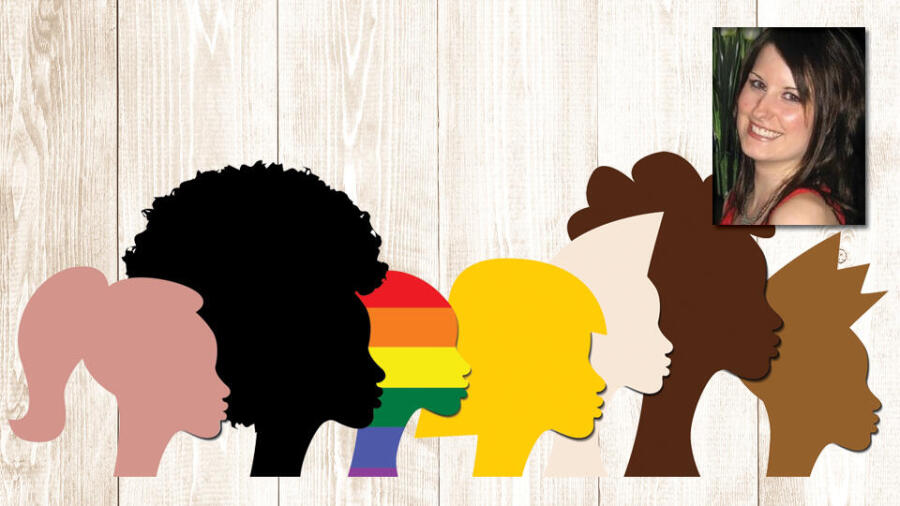My first job in the adult industry was as a part-time sales associate at a “sticky floor store.” It was a stereotypical 1990s video store focused on DVD and VHS — yes, it was that long ago — with only a small selection of other products. I only worked there for a couple of years before moving on to other things. However, when I was asked to become the manager of Smitten, it was an absolute delight to be part of a new, more modern boutique experience in the pleasure products industry. The focus was on bringing our industry out of the dark ages, into a time of openness, opportunity and education. What a difference!
Aside from the overall aesthetic of adult businesses becoming more welcoming, packaging in our industry has also progressed by leaps and bounds to become much more inclusive. Manufacturers and brands have become more aware that their products can be used in a variety of ways, and that the only limitations to their products are the customers’ imagination — and safety, of course. Gone are the outdated snapshots of 1970s pornographic scenes. Instead, we have shifted to simpler and more elegant packaging that does not pigeonhole a product to just one gender or sexual orientation.
By learning from each other in a respectful manner, we can continue to grow and do better in our businesses and our communities.
We are so lucky to be part of an industry that has been encouraging education, uptraining and inclusion for many years. We have also started to see more sex educators and experts from all walks of life, including the LGBT2SQ+ community, people of color and those with disabilities. A great example is Andrew Gurza, a disability awareness consultant who has created his own product to help those with physical limitations. He has also been featured on many media outlets and recently gave a wonderful interview on the Savage Lovecast talking about sex and disability, his new product and his personal experiences as a queer person with a disability.
These folks do great work in our stores as workshop hosts, certified educators, brand representatives and, most importantly, as our employees. I’ve had the privilege of working with many folks whose gender identities and orientations differ from my own. Our peers can impact us in a profound way and open our eyes to how the world has tried to silence and hide those who do not fit into familiar categories.
The most recent example of this potential in my own life and work is my first openly two-spirit co-worker, a wonderful and kind individual who encouraged all of us to ask questions and provided the guidance and information we all needed to help understand the history of the two-spirit community and how to advocate for that community. I send a big thank you out to them for helping put this information together so that I am able to share it with others who may be wondering about the two-spirit identity.
The term “two-spirit” is a translation of the Anishinaabemowin term “niizh manidoowag,” first adopted in 1990 by activist Albert McLeod, who proposed its use during the Third Annual Inter-Tribal Native American, First Nations, Gay and Lesbian American Conference. Indigenous communities across North America have historically recognized five gender identities, including female, male, two-spirit female, two-spirit male and transgender. It is also very important to note that the two-spirit identity is specifically for the indigenous community and is not meant to be taken up by non-indigenous individuals. Unfortunately, two-spirit traditions and culture were nearly erased by genocide and colonization, and this damage was amplified by the forced assimilation that took place in the residential school systems.
Those who are born two-spirit were and are considered sacred and honored. Being two-spirit is seen as a beautiful gift. Thankfully, the broader indigenous community is reclaiming this almost-lost identity along with other elements of indigenous history. Of course, indigenous communities may have their own traditions of the two-spirit identity, so the term may have a slightly different meaning depending on the community. To learn more about the two-spirit identity, it is important to ask questions in a respectful manner, talk with two-spirit community members, and listen to and learn from indigenous elders.
Smitten is located on Treaty 2 lands in the traditional territory of the Anishinaabeg, Cree, Oji-Cree, Assiniboine, Dakota and Dene Peoples, and the homeland of the Métis Nation. Just as we honor and respect the treaties made on these lands, becoming educated about the two-spirit identity is an important way that we can honor and respect inclusivity in our industry. By learning from each other in a respectful manner, we can continue to grow and do better in our businesses and our communities.
Nicole Christine is the manager of Smitten Premium Adult Boutique, located in the city of Brandon in the province of Manitoba, Canada.







